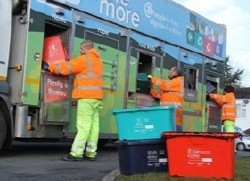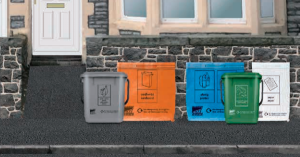Wales Municipal Recycling Rate Reaches 66.6% in 2023-24: A Step Closer to World-Leading Standards
Wales continues its impressive journey in recycling, with recent figures for the 2023-24 period confirming a recycling rate of 66.6% for municipal waste collected by local authorities. The latest report released today, underscores Wales’ progress toward the Welsh Government’s ambitious “Beyond Recycling” (2021) strategy, which set a statutory recycling target of 64% by 2019-20, holding until the next increase to 70% by 2024-25.
Over the past two decades, Wales has significantly increased its recycling rate, up from a mere 5% in the late 1990s. The current 66.6% figure is a 0.9 percentage point improvement over 2022-23, demonstrating steady, positive growth in sustainable waste handling. Among the 22 Welsh local authorities, 18 met or exceeded the statutory 64% target, while six of these authorities—Bridgend, Pembrokeshire, Ceredigion, Swansea, Carmarthenshire, and Vale of Glamorgan—have already achieved the 70% benchmark, well ahead of schedule.
A Closer Look at Municipal Waste Data
In 2023-24, Wales generated 1.4 million tonnes of municipal waste, a modest 0.6% increase from the previous year but notably still 7% lower than in 2021-22. This makes it the second-lowest amount recorded since data collection began in 2001-02. As part of the strategy, Wales also aims to reduce overall household waste by 2050, with household waste currently constituting 87% of all municipal waste collected. Notably, residual household waste per person fell by 2.1% from 172kg to 168kg, reflecting increased individual awareness and commitment to reducing landfill contributions.
Local authorities also saw gains in non-household waste recycling, with rates rising by 4.9 percentage points to 80.9%. The household recycling rate also edged up from 64.3% to 64.6% during the same period, making a notable impact on the overall municipal recycling rate.
Regional Highlights and Areas for Improvement
Recycling rates across Wales varied, with Bridgend leading at 72.8% and Cardiff lagging at 60.1%. While the vast majority of councils achieved or surpassed the target, four authorities—Cardiff, Caerphilly, Flintshire, and Wrexham—fell short. Cardiff, Caerphilly, and Flintshire did not meet the target for the second consecutive year, although improvements were noted in Torfaen and Isle of Anglesey, which exceeded the target after falling short in 2022-23.
Post-Pandemic Resilience
The report highlights that the pandemic notably impacted waste management patterns, with changes in consumption and waste generation during lockdowns. Recovery timelines have varied among local authorities, and comparing data against the last pre-pandemic year (2018-19) provides valuable context. Wales has effectively rebounded, and these gains are especially impressive when viewed in the light of this challenging period.

Looking Ahead
With a target to reach 70% by 2024-25, the Welsh Government’s “Beyond Recycling” strategy remains a guiding force, inspiring continued effort toward waste reduction and recycling. As Wales advances toward becoming a global model for recycling, the commitment at both local and national levels will be crucial.
For those interested in detailed local authority recycling figures or tracing the journey of collected recyclables, the “My Recycling Wales” website offers an interactive platform showcasing Welsh achievements in sustainable waste management across the UK and globally.
For more insights, visit My Recycling Wales.


